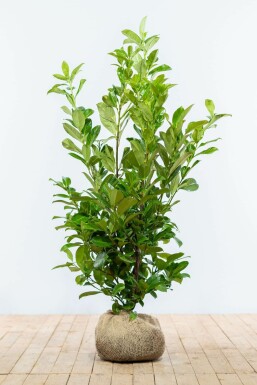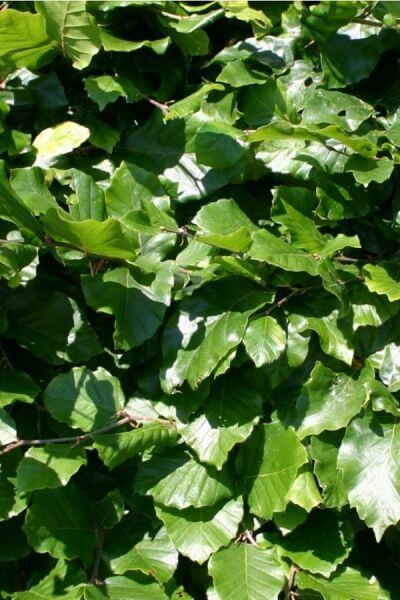Hedge Plants For Innovative Gardens
Hedge Plants For Innovative Gardens
Blog Article
Best Hedge Plants For Hedges And Screens
Improve your garden's attraction with lavish hedge ranges such as Yew (Taxus), Thuja, Laurel, Photinia, and Bamboo, celebrated for their structural stability and environmental advantages.
Yew and Thuja provide evergreen coverage and winter season resilience, while Laurel provides quick growth and broad, aromatic leaves.
Photinia adds seasonal appeal with its dynamic red foliage, and Bamboo lends a low-maintenance, peaceful atmosphere.
These hedges improve air quality, decrease noise, and develop tranquil, private areas.
Proper planting, spacing, and upkeep guarantee energetic growth and environmental harmony.
Check out how these lavish varieties can elevate your garden's beauty and wellness.
Key Takeaways
Transform Your Garden With Lush Hedge Varieties
- Select Yew for its thick, evergreen growth and unequaled durability.
- Select Laurel for its fast development and broad leaves, guaranteeing quick personal privacy.
- Select Photinia for its lively seasonal foliage, which turns a striking dark red.
- Utilize Bamboo for a low-maintenance, winter-hardy hedge with aesthetic appeal.
- Space plants 2-3 per meter and prune routinely for ideal development and health.
Popular Hedge Plants
When transforming a garden with rich hedge ranges, it's vital to think about popular hedge plants such as Yew, Thuja, Laurel, and Photinia due to their special attributes and benefits.
Yew (Taxus) is extremely respected for its longevity and dense, green growth, making it a prime choice for enduring landscapes.
Thuja is noted for its evergreen foliage and robust winter durability.
Photinia includes seasonal vibrancy with red leaves that darken over time, creating dynamic visual appeal.
Laurel offers rapid development and aromatic, broad leaves, suitable for quick privacy.
Additionally, Bamboo is an excellent choice for ambiance, using a low-maintenance, winter-hardy option that enhances the garden's aesthetic with its elegant, swaying walking canes.
These selections accommodate a variety of horticultural needs and preferences.
Advantages of Garden Hedges
Garden hedges provide a wide variety of benefits, making them a valuable addition to any landscape. These natural barriers are cost-efficient to carry out and offer significant wind protection, boosting air flow and adding to noise reduction. The thick foliage of hedges like Thuja and Beech guarantees privacy by blocking exposure, developing a secluded and serene environment.
Hedges likewise play an essential role in microclimate regulation, supplying a stable environment that fosters plant growth and reduces temperature variations. Their elaborate leaf structures filter toxins, improving air quality and adding to a healthier garden environment.
Moreover, hedges master noise decrease, taking in and deflecting acoustic waves to lower ambient sound levels. This double functionality of supplying both visual and acoustic personal privacy enhances the total tranquility and visual appeal of any garden.
Planting and Maintenance Tips
For a successful hedge, precise preparation of the planting area is crucial. Guarantee the soil has correct pH and drainage to support strong root development.
Area the plants properly for the chosen types. Water the hedge frequently throughout its initial growth stage, changing as needed with seasonal changes.
Execute a systematic pest control and disease avoidance technique, utilizing natural or chemical treatments when needed. Regularly examine for aphids, termites, and fungal infections.
Apply mulch to retain wetness and reduce weeds. Seasonal pruning promotes thick development and air circulation, important for plant health.
Following these guidelines will assist you cultivate a dynamic, well-maintained hedge that enhances the beauty of your garden.
Spacing and Cutting Standards
Spacing and Cutting Standards
Correct spacing and cutting are vital for cultivating healthy, aesthetically appealing hedges. Appropriate spacing makes sure each plant gets enough nutrients, light, and air flow.
Follow these guidelines for optimal hedge maintenance:
- Spacing: Position hedge plants 2-3 plants per meter to motivate robust development.
- Pruning Strategies: Routine pruning is necessary for keeping wanted hedge height and shape. Cut brand-new growth in summer and cut back older wood throughout winter season.
- Seasonal Care: Change trimming schedules and techniques according to seasonal requirements to ensure plant health.
- Hedge Height: Routinely screen and trim to maintain the desired hedge height and attain consistent looks.
Adhering to these actions will guarantee your hedge flourishes, enhancing both the appeal and functionality of your garden.
Selecting the Right Hedge
Choosing the Right Hedge
Picking the proper hedge involves evaluating aspects such as mature height, foliage density, and environmental strength. Successful hedge plant selection requires comprehending each types' growth attributes and site-specific versatility.
For instance, Yew (Taxus) provides excellent durability and dense development, while Thuja is notable for its winter strength. Furthermore, considering upkeep requirements is vital; fast-growing species like Laurel or Privet need regular cutting, whereas low-maintenance options like Bamboo or Ivy may be preferable for those looking for minimal maintenance.
Environmental aspects such as soil type, light schedule, and moisture conditions need to also direct the choice process. This mindful approach makes sure the picked hedges will prosper, offering both practical and visual benefits to the garden landscape.
Shipment and Planting Advice
To ensure your hedge plants grow, they ought to be delivered by specialized carriers and planted promptly upon arrival.
Follow these vital actions for effective planting:
- Soil Preparation: Enrich the soil with natural matter to enhance drainage and nutrient material.
- Planting Depth: Create a trench two times the width and equal to the depth of the root ball.
- Watering Techniques: Water thoroughly after planting, keeping the soil regularly damp but not filled.
- Mulching: Use a layer of mulch to retain moisture and reduce weeds.
Consumer Support and Service
Given the essential function of prompt help in horticultural pursuits, our client assistance group is offered 6 days a week through telephone, e-mail, and social networks to provide expert advice and promptly resolve any concerns. Their dedication to fast reaction times ensures consumer fulfillment by dealing with questions related to plant health, optimum planting methods, and maintenance schedules.

----------------------
Email
This extensive assistance system, enhanced by a stellar 9.3/ 10 customer rating, highlights our commitment to improving the gardening experience for each customer.
Regularly Asked Concerns
The Length Of Time Does It Consider Hedge Plants to Develop?
Hedge plants generally require one to three years to become fully established, with the exact duration varying by types and growing conditions.
Reliable care throughout this critical duration is necessary for robust development. Constant watering, watchful weed control, and suitable fertilizer application are critical in promoting strong root development.
For example, fast-growing species like Laurel may develop quicker, while slower-growing ranges such as Yew might take longer. Persistent maintenance accelerates the facility procedure, resulting in healthy and dense hedges.
What Are the very best Hedge Plants for Personal Privacy?
The concern of the very best hedge plants for privacy includes examining evergreen and deciduous choices.
Evergreen hedges like Thuja, Laurel, and Cypress provide year-round coverage, making sure constant privacy.
In contrast, deciduous hedges such as Beech use seasonal personal privacy, shedding leaves in colder months.
Secret upkeep suggestions for privacy hedges consist of regular trimming, fertilizing in spring, and correct spacing-- generally 2 to 3 plants per meter.
Additionally, constant watering and persistent weed elimination are important for promoting healthy, dense growth.
Can Hedge Plants Bring In Wildlife to My Garden?
Yes, hedge plants can draw in wildlife to your garden by offering essential advantages like shelter, food, and nesting sites, thereby improving local biodiversity. For example, yew, holly, and laurel are exceptional for attracting birds, while ivy supports a range of bugs.
Nevertheless, it is necessary to keep in mind that there are some drawbacks, such as increased upkeep to manage insects and routine upkeep. Thoroughly selecting and maintaining hedge ranges can help stabilize these downsides and benefits, eventually cultivating a sustainable and lively ecosystem in your garden.
Are There Any Blooming Hedge Plants Available?
Yes, there are flowering hedge plants available that can improve the appeal of your garden.
For instance, Elaeagnus, also referred to as Olive Willow, produces aromatic white flowers in the fall, including a touch of elegance.
Photinia, another popular option, showcases vibrant red leaves that develop into an abundant green, creating a dynamic visual result throughout the seasons.
To Additional hints make sure these plants flourish, it's important to practice appropriate pruning methods and seasonal upkeep, such as cutting new growth in the summer season and cutting back in the winter.
These measures will help maintain the health and visual appeal of your blooming hedges.
How Do I Prevent Pests in My Hedge Plants?
To prevent insects in hedge plants, use natural pest control approaches and keep proper hedge care. Introduce useful bugs like ladybugs, which victimize damaging bugs, to create a balanced ecosystem.
Routinely inspect your hedges for signs of problem and immediately remove any affected parts to avoid the spread. Make sure the health of your hedges by using balanced fertilizers and providing sufficient water.
Utilize mulching to keep soil wetness and correct spacing to reduce plant stress and promote robust growth. These practices collectively help in decreasing bug concerns and keeping a healthy hedge.
Conclusion
In essence, picking the ideal hedge ranges such as Yew, Thuja, and Laurel can change any garden into a serene sanctuary. These plants supply year-round plant, improve aesthetic appeal, and offer practical benefits like sound decrease and wind protection.
Proper planting strategies, precise spacing, constant watering, and seasonal trimming are important for optimal development.
Reliable shipment services and skilled client support make sure a smooth experience from purchase to planting, making it simpler than ever to raise your outside space.
Garden hedges use a plethora of advantages, making them a valuable addition to any landscape. These natural barriers are cost-effective to carry out and offer significant wind defense, improving air circulation and contributing to noise reduction. The thick foliage of hedges like Thuja and Beech guarantees privacy by blocking visibility, developing a secluded and tranquil environment.

Pruning Strategies: Routine pruning is vital for preserving preferred hedge height and shape. Trim new development in summer season and cut back older wood throughout winter.
Report this page